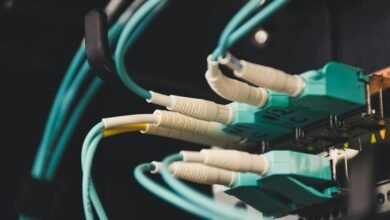Telecommunication Risk Mitigation Department 5093397922 6087912143 8446149088 5593029073 2157142516 3137364771

Is it true that the Telecommunication Risk Mitigation Department can significantly reduce vulnerabilities within networks? By employing targeted strategies for risk identification and utilizing advanced tools, it’s possible to enhance resilience against potential threats. Yet, the effectiveness of these measures hinges on continuous monitoring and adaptation. What specific challenges remain in achieving optimal security and compliance, and how can organizations navigate these complexities?
Overview of Telecommunication Risks
In an increasingly interconnected world, understanding telecommunication risks is essential for any organization relying on digital communication.
You must recognize network vulnerabilities that can expose sensitive data and disrupt operations.
Additionally, staying ahead of regulatory compliance is critical to avoid penalties and protect your organization’s reputation.
A strategic approach to these risks will enhance your organization’s resilience in the digital landscape.
Strategies for Risk Identification and Analysis
While many organizations recognize the importance of addressing telecommunication risks, effective strategies for risk identification and analysis are often overlooked.
Implementing robust risk detection methods is crucial. Utilize analysis techniques like scenario analysis and root cause analysis to uncover potential vulnerabilities.
Tools and Technologies for Risk Mitigation
Identifying and analyzing risks is just the beginning; leveraging the right tools and technologies is vital for effective risk mitigation in telecommunications.
You should focus on advanced risk assessment software and mitigation technologies that streamline your processes.
These tools enable you to identify vulnerabilities quickly, implement robust strategies, and maintain a proactive stance against potential threats, ensuring your network remains secure and efficient.
Importance of Continuous Monitoring and Improvement
Continuous monitoring and improvement are essential to maintaining a resilient telecommunications infrastructure, as they allow you to adapt swiftly to evolving risks.
By implementing effective monitoring strategies, you can identify vulnerabilities proactively.
Coupling these with robust improvement practices ensures your systems remain responsive and secure.
This dynamic approach not only enhances operational efficiency but also empowers you to safeguard your telecommunications environment effectively.
Conclusion
In the realm of telecommunications, think of your network as a fortress. Without vigilant watchmen—risk identification and continuous monitoring—the walls can crumble under unseen threats. Just as a castle adapts to new attack strategies, your department must embrace advanced tools and proactive strategies to fortify defenses. By doing so, you not only safeguard sensitive treasures but also nurture trust among stakeholders. In this ever-evolving landscape, resilience isn’t just a goal; it’s your kingdom’s lifeblood.





